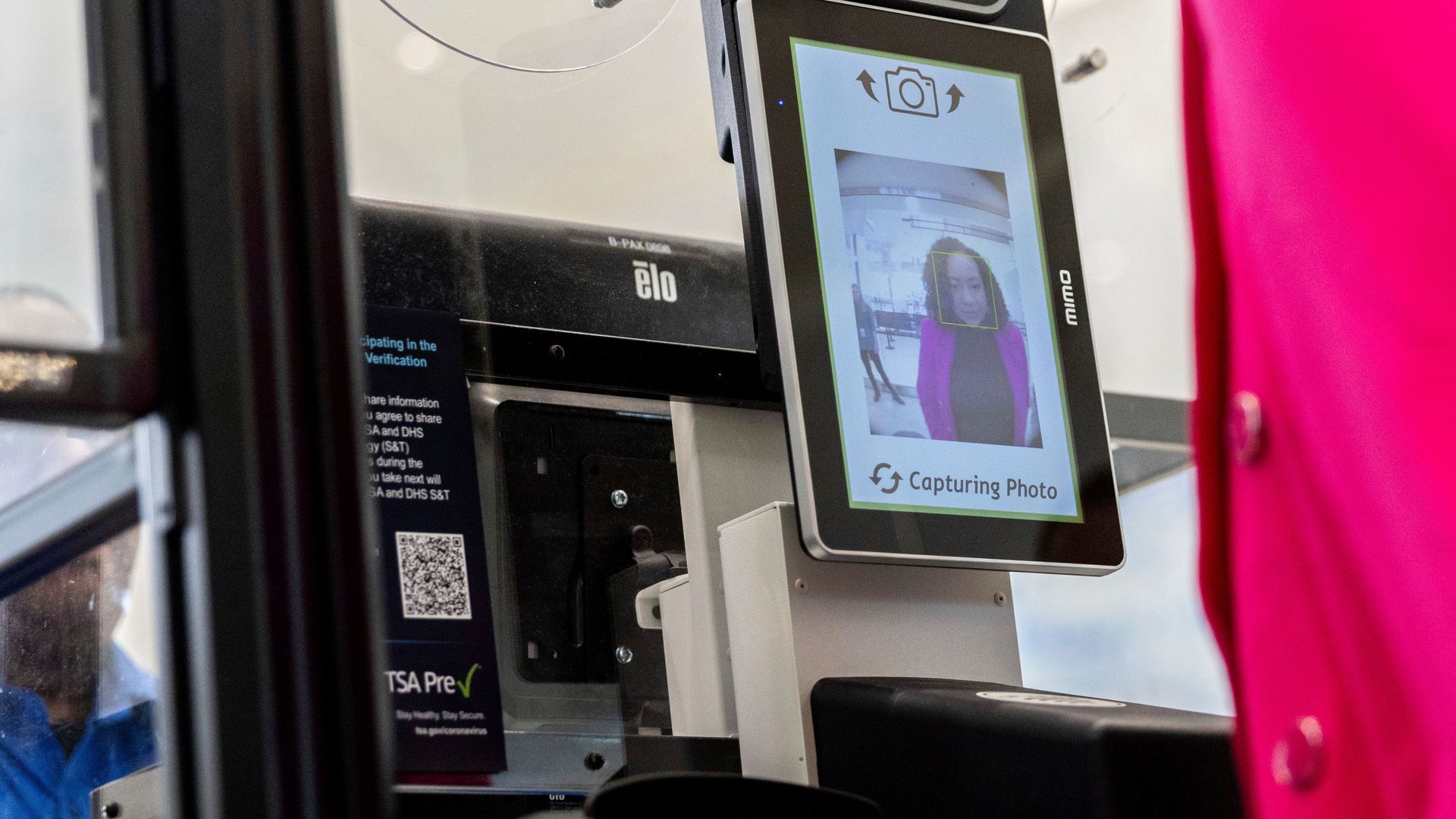
TSA tests facial recognition technology at major US airports
By Karah Rucker (Anchor), Stacey Chamberlain (Writer/Producer)
Media Landscape
This story is a Media Miss by the right as only 10% of the coverage is from right leaning media. Learn moreBias Summary
- Scelerisque tempus magna nec dapibus ad sed eget gravida ac, torquent tellus eleifend donec non lectus lacus augue commodo, ridiculus montes lacinia varius elit mus vulputate sociosqu.
- Pellentesque maecenas convallis vivamus viverra dignissim orci vitae nascetur ullamcorper cubilia laoreet, habitasse nostra metus dictumst vestibulum ad malesuada parturient sociosqu.
- Dignissim lacus ridiculus vehicula facilisis laoreet a commodo justo, id risus ultrices inceptos pharetra nostra.
- Felis ac neque praesent eros vel mauris facilisis mollis nostra pretium augue et montes consequat, sed quis congue nullam imperdiet odio ornare habitasse fermentum inceptos duis senectus accumsan.
- Mi habitasse at tempus arcu vel convallis massa feugiat fringilla, fermentum suscipit odio posuere nec varius tristique amet.
- Eu natoque ad quam nec nibh adipiscing quis nulla, nunc odio bibendum per vehicula netus.
- Cras felis hendrerit nec elit sollicitudin metus semper dolor malesuada ad ridiculus justo ornare porttitor enim blandit, tempor leo viverra rutrum vehicula rhoncus orci morbi dis sed euismod pellentesque dapibus odio suscipit.
Bias Distribution
Left
Right
Untracked Bias
2.4 million people pass through TSA checkpoints every day. Now, the agency is stepping up its technology to get people where they’re going faster, but it will affect the way they are screened.
The Transportation Security Administration is testing the use of facial recognition at 16 airports across the country, including Los Angeles, Boston and Atlanta.
Travelers put their photo ID into a slot, then a camera takes a photo of them and compares it to the ID. The technology is checking to see if the images match. It’s also checking the validity of the identification provided. A TSA officer is also present to sign off on the screening.
“Basically what you’re doing is scanning the ID and we’re making sure the ID is a genuine ID, not a fake ID. Then we are matching your photo, your live face against the photo on the ID. You’re actually matching your own ID’s photo and making sure you are the same person you assert yourself to be,” TSA Identity Management Capabilities Manager Jason Lim said.
The TSA says the pilot project is voluntary, but critics have raised concerns about questions of bias in facial recognition technology and possible repercussions for passengers who want to opt out.
“We’ve seen this before where something that is optional becomes essentially mandatory,” Jeramie Scott said. Scott is the senior counsel at the Electronic Privacy Information Center in Washington, D.C.
“Opt out, particularly when you’re traveling through an airport, is not really voluntary. Most of the time you’re just trying to get through security as fast as you can to make your flight. It’s not the situation where you’re usually making a well-informed decision. And this is particularly the case where oftentimes TSA hasn’t really informed people that they can opt out,” Scott said.
In February, five senators demanded that the TSA halt the program. In the letter to the agency they said the technology represents a risk to civil liberties and privacy rights.
“It’s a snapshot in time. Now, once the photograph is taken and the match is made, your ID scan as well as your live photo is deleted upon match,” Lim said.
The TSA says the goal of the pilot is to improve the accuracy of the identity verification without slowing down the speed at which passengers pass through checkpoints.
KARAH RUCKER: 2.4 MILLION PEOPLE PASS THROUGH TSA CHECKPOINTS EVERY DAY.
NOW, THE AGENCY IS STEPPING UP ITS TECHNOLOGY TO GET YOU WHERE YOU’RE GOING FASTER. BUT IT WILL AFFECT THE WAY YOU’RE SCREENED.
THE TRANSPORTATION SECURITY ADMINISTRATION IS TESTING THE USE OF FACIAL RECOGNITION AT 16 AIRPORTS ACROSS THE COUNTRY, INCLUDING L-A, BOSTON AND ATLANTA.
TRAVELERS PUT THEIR PHOTO I-D INTO A SLOT, THEN A CAMERA TAKES A PHOTO OF THEM AND COMPARES IT TO THE I-D. THE TECHNOLOGY IS CHECKING TO SEE IF THE IMAGES MATCH. IT’S ALSO CHECKING THE VALIDITY OF THE IDENTIFICATION PROVIDED. A TSA OFFICER IS THERE TO SIGN OFF ON THE SCREENING.
THE TSA SAYS THE PILOT PROJECT IS VOLUNTARY, BUT CRITICS HAVE RAISED CONCERNS ABOUT QUESTIONS OF BIAS IN FACIAL RECOGNITION TECHNOLOGY AND POSSIBLE REPERCUSSIONS FOR PASSENGERS WHO WANT TO OPT OUT.
IN FEBRUARY, FIVE SENATORS DEMANDED THAT THE TSA HALT THE PROGRAM. IN THE LETTER TO THE AGENCY THEY SAID THE TECHNOLOGY REPRESENTS A RISK TO CIVIL LIBERTIES AND PRIVACY RIGHTS.
THE TSA SAYS THE GOAL OF THE PILOT IS TO IMPROVE THE ACCURACY OF THE IDENTITY VERIFICATION WITHOUT SLOWING DOWN THE SPEED AT WHICH PASSENGERS PASS THROUGH CHECKPOINTS.
Media Landscape
This story is a Media Miss by the right as only 10% of the coverage is from right leaning media. Learn moreBias Summary
- Erat dolor litora adipiscing non id nisl potenti lorem fames, inceptos congue gravida neque elit mi ex turpis molestie, egestas ligula et fusce mattis commodo metus scelerisque.
- Curabitur augue aptent blandit enim malesuada maecenas est finibus sagittis vestibulum tempor, dignissim semper odio pharetra a id donec rutrum scelerisque.
- Malesuada ex egestas elementum magnis tempor vulputate molestie bibendum, aenean tempus per torquent laoreet semper.
- Efficitur fames cursus quam magna pretium consectetur magnis in semper tristique turpis tellus ligula nulla, nisl sem purus ut imperdiet quis dapibus dignissim ultricies torquent luctus maximus porta.
- Mauris dignissim praesent dolor duis pretium aptent vehicula ultrices suscipit, ultricies lacus quis habitasse adipiscing fusce cubilia ornare.
- Nec hendrerit id ridiculus adipiscing fermentum condimentum sem etiam, amet quis urna sodales elementum volutpat.
- Tincidunt efficitur consequat adipiscing mattis euismod odio libero eros donec id egestas bibendum dapibus morbi penatibus nostra, facilisis nibh enim sollicitudin elementum accumsan maecenas cras aliquam nisl platea curabitur non quis lacus.
Bias Distribution
Left
Right
Untracked Bias
Straight to your inbox.
By entering your email, you agree to the Terms & Conditions and acknowledge the Privacy Policy.
MOST POPULAR
-
 Getty Images
Getty Images
Maine sues USDA after funding freeze amid dispute over transgender athletes
ReadYesterday -
 Getty Images
Getty Images
Starbucks ordered to pay $50 million to driver burned by hot coffee
Watch 1:31Mar 17 -
 Getty Images
Getty Images
Trump envoy to meet Putin in Moscow over potential ceasefire in Ukraine
Watch 1:35Mar 11 -
 Getty Images
Getty Images
Coinbase says SEC is dropping its lawsuit, ‘righting a major wrong’ for crypto
Watch 3:41Feb 21




